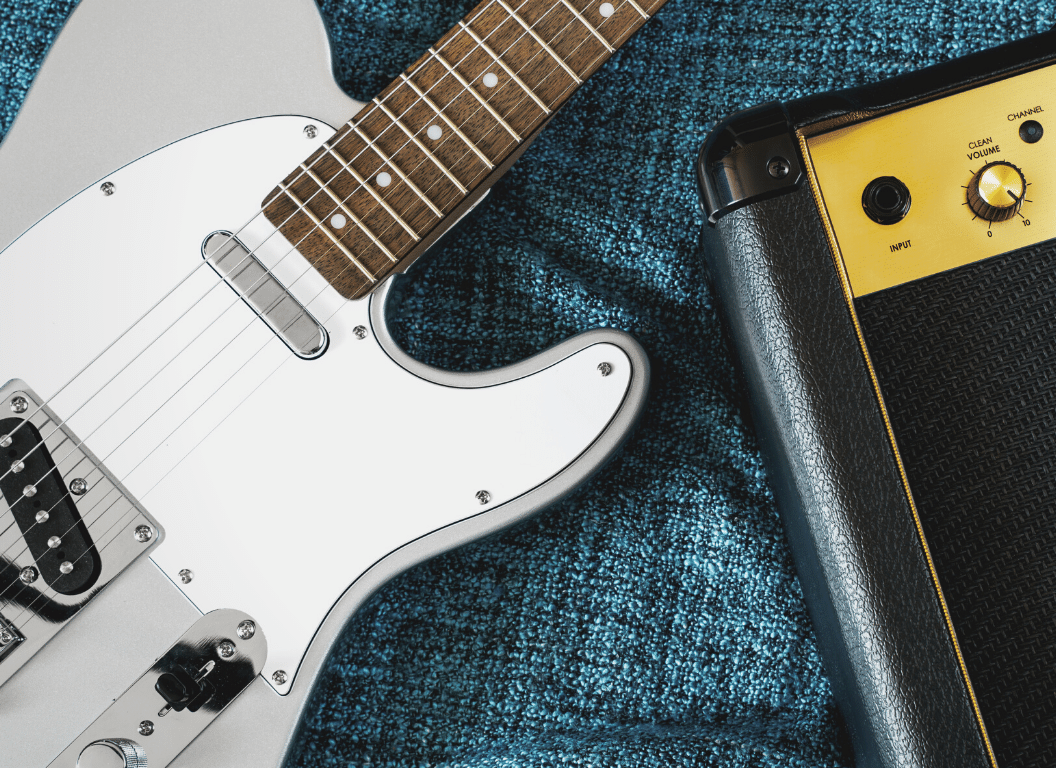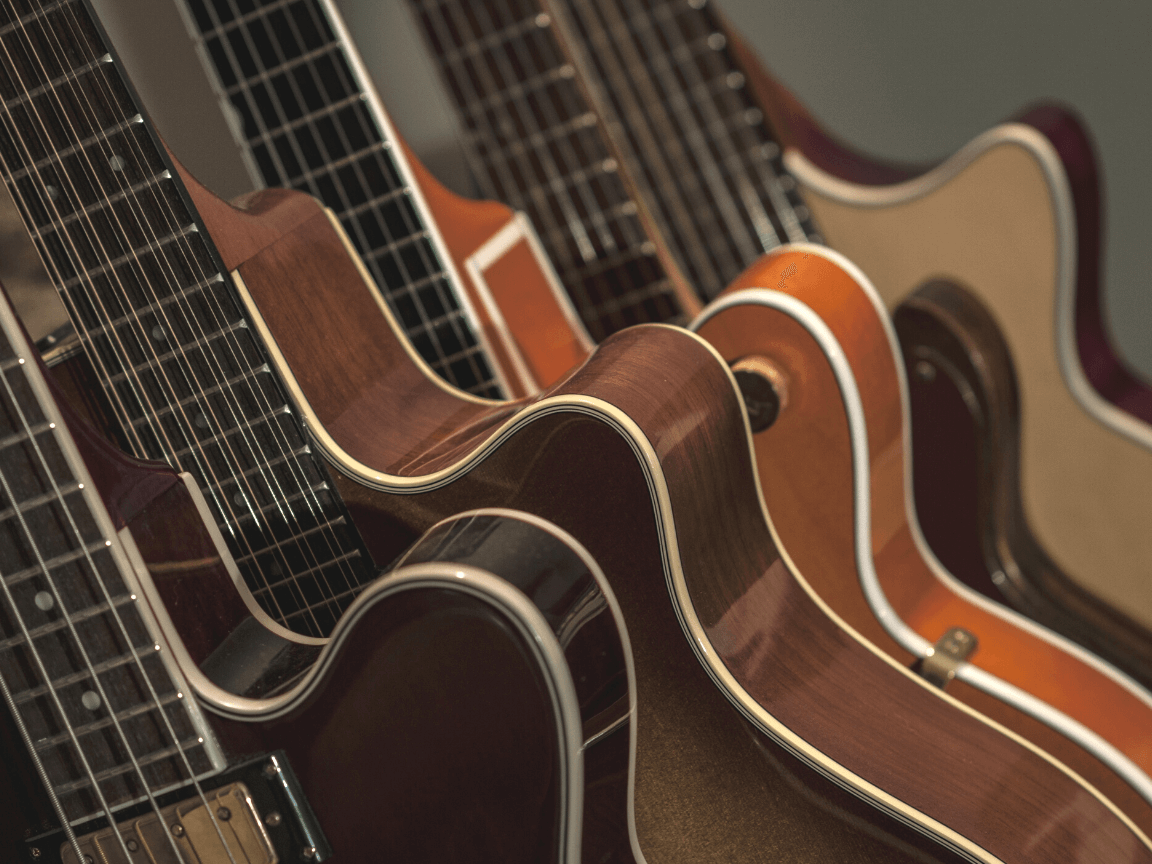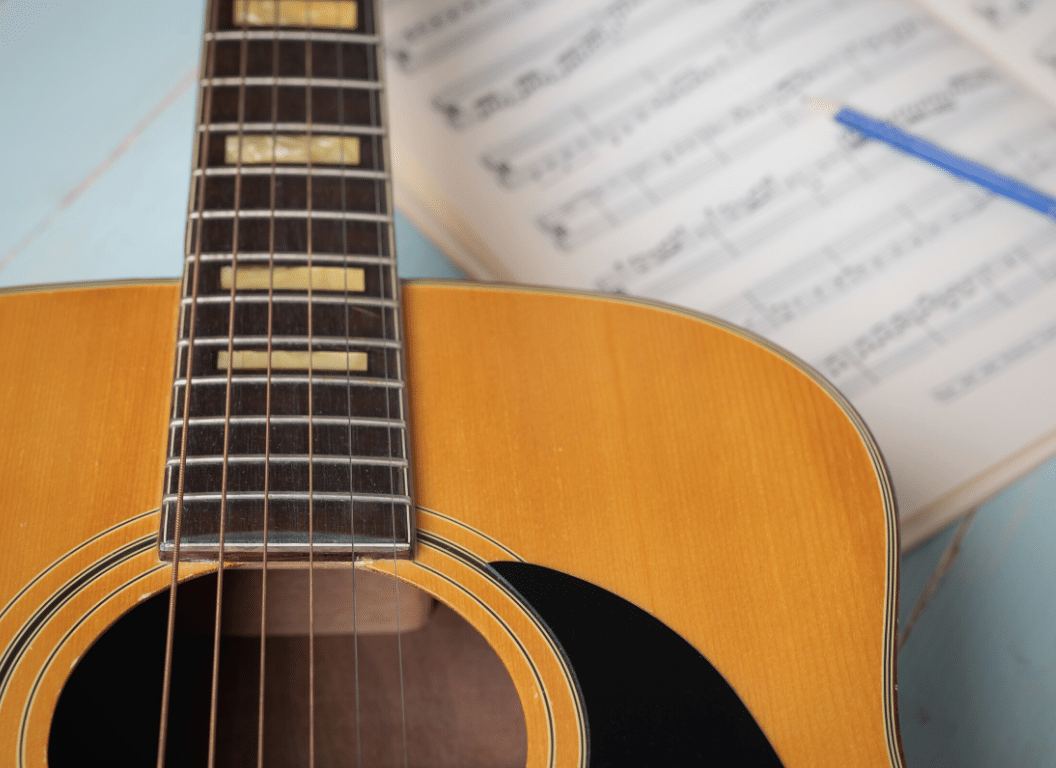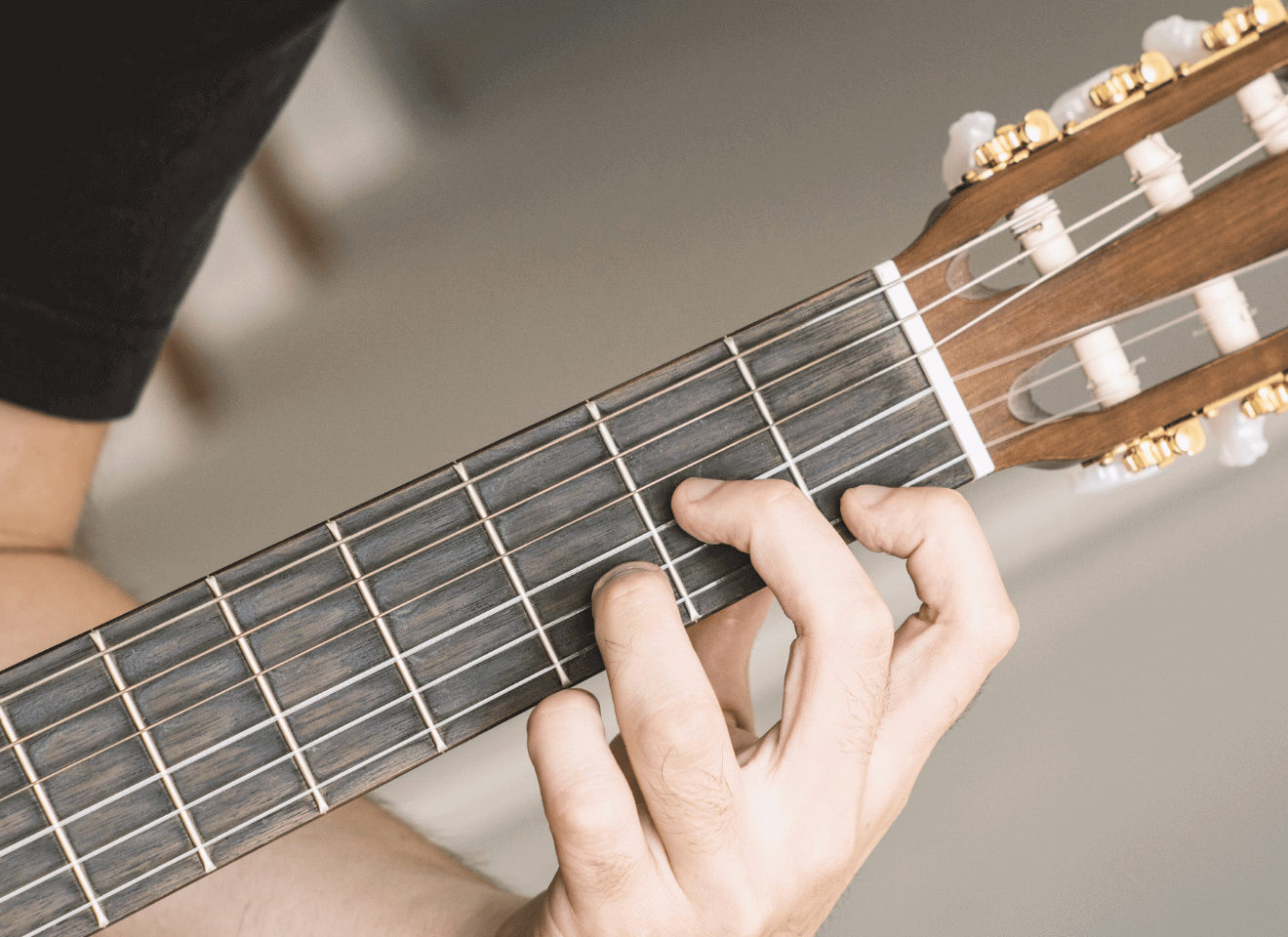The versatility of the guitar is one of its most alluring characteristics for both novice and seasoned players.
One of the many methods of playing this versatile instrument is fingerstyle, a technique that allows a guitarist to play several musical voices at once.
A common question that usually arises within the guitar playing community is the suitability of an electric guitar for learning fingerstyle.
This concern largely emanates from the fact that most fingerstyle guitarists are seen playing acoustic guitars.
As such, learners may wonder if the electric guitar can offer the same sound quality and ease of learning this technique.
Table of Contents
- Can You Learn Fingerstyle Guitar On An Electric Guitar?
- What Do People Mean by “Fingerstyle Guitar”?
- Why Choose an Electric Guitar for Fingerstyle?
- Adjusting Your Fingering Techniques for Electric Guitars
- Pros and Cons of Learning Fingerstyle on an Electric Guitar
- How the Design of an Electric Guitar Affects Fingerstyle Playing?
- Fingerstyle on Acoustic vs. Electric Guitars
- What to Consider When Choosing an Electric Guitar for Fingerstyle?
- Practice Exercises for Fingerstyle on Electric Guitar
- The Bottom Line
Can You Learn Fingerstyle Guitar On An Electric Guitar?
Yes, it is indeed possible to learn fingerstyle guitar on an electric guitar. Although traditionally associated with acoustic guitars, the fingerstyle technique can be effectively practiced and performed on electric guitars as well. However, the feel and sound will vary, hence it’s ideal to eventually practice on the type of guitar you intend to perform with.
In addition to the feasibility of learning fingerstyle on an electric guitar, it’s important to recognize the nuances that come with this method.
Understanding these subtle differences can enhance your experience and optimize your learning process.
We will be providing insights about fingerstyle techniques, the differences between acoustic and electric guitars when it comes to this playing style, and some practical tips for practicing fingerstyle on an electric guitar.
You will find this information invaluable, irrespective of whether you’re a newbie or an experienced guitarist looking to transition between guitar types.
The versatility this knowledge offers is crucial in expanding your guitar playing skills.
So let’s delve deeper into this fascinating topic.
What Do People Mean by “Fingerstyle Guitar”?
Fingerstyle guitar, also commonly referred to as fingerpicking, is a guitar playing technique that involves plucking the strings directly with the fingertips, fingernails, or picks attached to fingers.
This is as opposed to flatpicking (picking individual notes with a single plectrum, commonly referred to as a pick).
Using this method, the guitarist plays various musical lines simultaneously, creating a rich and complex texture of sound, which is highly distinctive of genres such as folk, blues, classical, and even modern percussive fingerstyle.
The technique of fingerstyle guitar has a long and rich history, drawing influences from various music traditions worldwide.
Some of these include classical guitar in the Western world, and traditional music forms in Africa and Asia.
The beauty of fingerstyle guitar lies in the ability to produce harmonic and rhythmic patterns simultaneously, thereby often turning the guitar into a solo instrument that can accompany itself.
Using this method, the guitarist plays various musical lines simultaneously, creating a rich and complex texture of sound, which is highly distinctive of genres such as folk, blues, classical, and even modern percussive fingerstyle.
This complexity allows fingerstyle guitarists to showcase their creativity and skill in unique ways, making each performance not just a spectacle for the ear, but also for the eye.
Indeed, watching a skilled fingerstyle guitarist at work is like witnessing a maestro conductor leading an orchestra, with extraordinary precision and expressiveness.
Despite being a complex technique, fingerstyle guitar is not something that is reserved for professional musicians only.
In fact, many self-learned guitarists around the world have honed their skills in this technique, displaying remarkable performances.
While effective fingerstyle guitar requires a good understanding of the instrument and a solid foundation in basic guitar techniques, it does not necessarily demand highly advanced proficiency.
The key to mastering fingerstyle guitar is practice, patience, and passion.
With these elements, any learner can excel in this unique and enchanting guitar technique.
One crucial factor that contributes essential nuances to fingerstyle playing is the choice of guitar.
Different guitars possess distinct characteristics that can affect a player’s fingerstyle technique.
While many traditional fingerstyle guitarists prefer acoustic guitars, an increasing number are exploring the creative potential presented by electric guitars.
The key to mastering fingerstyle guitar is practice, patience, and passion.
Due to their design, electric guitars can offer a range of tonal possibilities and effects that are typically unavailable on acoustic models, adding another dimension to a player’s repertoire.
Contrarily, some players find that the feel and sound of an acoustic guitar is more suitable for fingerstyle techniques, given its warm and resonant tone.
This video will provide you with an introduction to the art of fingerpicking on electric guitars.
It’s a comprehensive guide that caters to both beginners and advanced players, and it’ll give you an invaluable insight into the world of electric fingerstyle guitar.
Why Choose an Electric Guitar for Fingerstyle?
Fingerstyle guitar playing is known to be primarily associated with acoustic guitars, however, electric guitars present a unique option for this method of playing.
While it may initially appear unorthodox, using an electric guitar for fingerstyle can yield various benefits and distinctive sound aesthetics.
The Unique Sound Aesthetic
First and foremost, the sound of an electric guitar can bring a new dimension to your fingerstyle playing.
Unlike the resonant, warm tones of an acoustic, electric guitars are capable of more varied and dynamic sound options.
This feature offers a broader platform for fingerstyle players to experiment with their style and potentially create unique soundscapes.
Unlike the resonant, warm tones of an acoustic, electric guitars are capable of more varied and dynamic sound options.
This point isn’t to detract from the beauty of an acoustic’s sound.
Instead, it emphasizes the unique features of an electric guitar and the new sonic possibilities it can introduce to fingerstyle.
Using effects such as reverb, delay, or distortion can enhance your sound, adding more character to your fingerstyle playing.
Light Gauge Strings and Fretboard Accessibility
Electric guitars generally use lighter gauge strings compared to acoustics, making them easier to play for longer durations.
This characteristic can benefit fingerstyle players who perform complex and intricate fingerpicking patterns that can potentially strain the fingers.
Electric guitars generally use lighter gauge strings compared to acoustics, making them easier to play for longer durations.
In addition to the lighter gauge strings, electric guitars customarily have slimmer necks and smaller body sizes.
This difference significantly improves fretboard accessibility, allowing fingerstyle guitarists to reach notes and chords more comfortably and easily.
Electric Guitar Amplification
Another significant advantage of using an electric guitar for fingerstyle is its amplification capability.
This feature is beneficial for fingerstyle performers who play in large venues or with bands where acoustic guitars might struggle to be heard.
Another significant advantage of using an electric guitar for fingerstyle is its amplification capability.
Electric guitars are highly customizable, allowing players to modify their instrument to suit their preferences.
This facet includes the capability to adjust pickup types, configurations, wood types, and electric wiring, influencing the overall sound and feel of the guitar.
For fingerstyle players, having this level of control over your instrument’s sound can be especially advantageous.
Adjusting Your Fingering Techniques for Electric Guitars
When transitioning from playing fingerstyle on an acoustic guitar to an electric guitar, it’s crucial to adjust your fingering techniques.
An electric guitar usually has a smaller body and thinner strings than an acoustic guitar, making it require less finger pressure to produce sound.
Use the Correct Finger Pressure
The first aspect to consider when adjusting your fingering technique is the pressure you apply to the strings.
Electric guitar strings respond much more efficiently to light finger pressure.
Exerting too much force will cause the strings to buzz or sound sharp, which can distort the music’s overall quality.
To achieve a clean sound, you may need to lighten your touch when fretting the strings and adopt a more subtle approach to picking and strumming.
Adapting to the lighter touch required for electric guitar can take time, but it can significantly improve your overall playing ability.
Even experienced players transitioning to electric guitar often struggle with this adjustment at first.
However, over time, this skill will become second nature and improve your ability to modulate sound across different types of guitars.
Adapting to the Electric Guitar Neck
The neck of an electric guitar is typically thinner and shorter than that of an acoustic guitar.
This can provide a more comfortable playing experience and allow for faster finger movements, making it easier to perform advanced fingerstyle techniques.
However, the smaller neck dimensions can also lead to a packed string layout—leading to unintentionally striking adjacent strings.
Therefore, it’s a brilliant idea to refine your picking precision, ensuring that you are hitting the right strings, at the right time, with the right pressure.
This video provides a quick and manageable fingerstyle lesson for beginners.
It may help you understand how to adjust your finger pressure and positions for successful electric guitar fingering.
Finger Positioning
Using the right finger positions on an electric guitar is also critical to achieving brilliant fingerstyle playing.
Electric guitars are designed to make it easier to execute complex finger movements, such as bends, slides, and hammer-ons, which are a significant component of fingerstyle playing.
However, if your finger positions aren’t ideal, these techniques may result in unwanted noise or off-notes.
The keys to attaining correct finger positioning include aligning the tips of your fingers directly behind the targeted frets and avoiding unnecessary tension in your hand and fingers.
While these adjustments can initially be challenging, they will indeed pay off in the long run by enhancing your fingerstyle skills on an electric guitar.
Remember: it’s never a sudden shift, but a gradual transition, giving you ample opportunities to experiment, adjust, and grow your techniques.
Pros and Cons of Learning Fingerstyle on an Electric Guitar
When contemplating the idea of learning fingerstyle on an electric guitar, it’s essential to evaluate both the benefits and drawbacks.
Advantages of Fingerstyle on Electric Guitars
The first significant plus of learning fingerstyle technique on an electric guitar is the diversity of tones it encompasses.
This instrument’s electronic nature allows guitarists to manipulate the sound in a way that’s impossible to achieve on an acoustic guitar.
Furthermore, electric guitars are more forgiving to the fingers, and their softer strings can make the fingerpicking learning process considerably easier.
The electric guitar’s slim neck and small body also make it much easier to maneuver and play comfortably.
An electric guitar’s amplified sound can be easily adjusted with peripherals, allowing for more control over the volume and tone.
The electric guitar’s slim neck and small body also make it much easier to maneuver and play comfortably.
As a result, electric guitars make controlling different sound effects and volumes more manageable and allow guitarists to get very creative with their fingerstyle playing.
Guitarists also have the opportunity to explore a range of genres, from jazz to heavy metal, all of which can be played fingerstyle on an electric guitar.
Disadvantages of Fingerstyle on Electric Guitars
On the flip side, learning fingerstyle on an electric guitar comes with a few drawbacks as well.
One of the major downsides to starting with electric guitars is the need for additional equipment such as amplifiers and cables, which can complicate the learning process for beginners.
Moreover, electric guitars can be more expensive than acoustic guitars.
The instrument itself, along with the required additional gear, can add to the cost.
Another trade-off is that electric guitars lack the natural resonance that acoustic guitars have, which might create a very different sound experience for fingerstyle players.
One of the major downsides to starting with electric guitars is the need for additional equipment such as amplifiers and cables, which can complicate the learning process for beginners.
This means the guitarist might not get an immediate acoustic feedback from their fingerpicking, as they would when plucking an acoustic guitar’s strings.
Lastly, the ultra-light gauge strings on electric guitars also make it less challenging, hence, not building enough strength and technique that heavier acoustic strings would promote.
The decision to learn fingerstyle on an electric guitar is personal and depends on the student’s musical tastes, budget, and learning goals.
How the Design of an Electric Guitar Affects Fingerstyle Playing?
Playing fingerstyle guitar on an electric model can be a vastly different experience compared to an acoustic one, largely due to the different design elements each type of guitar possesses.
Let’s delve into how the design of an electric guitar impacts your fingerstyle playing.
The String Gauge
As a general rule, electric guitars tend to have lighter string gauges than acoustic ones.
Lighter strings are easier to press down and pluck, making them ideal for complex fingerstyle patterns.
However, the drawback is that they often produce a less resonant sound than their heavier equivalents, which some players find less satisfying.
An ideal compromise might be medium-gauge strings, offering a balance between playability and tonal richness.
The lighter string gauge on electric guitars, while less resonant, are easier to play complex fingerstyle patterns on, but medium-gauge strings could provide a balance between playability and sound resonance.
This emphasizes the point that a lower string gauge can make intricate fingerstyle techniques more manageable, even if there is a trade-off in terms of sound resonance.
Therefore, depending on the player’s preference, the string gauge can be a significant factor to consider when choosing an electric guitar for fingerstyle playing.
The Neck Width and Shape
The neck of an electric guitar typically has a smaller width and a flatter shape compared to an acoustic guitar.
This design can facilitate faster and more complex finger movements, which is crucial in playing fingerstyle.
However, those with larger hands might find a narrow neck constricting and less comfortable.
So, choosing the right neck shape and width is very personal and varies from one player to another.
While a narrow and flat neck allows for faster finger movements, those with larger hands might find it uncomfortable.
Again, this aspect of design has a significant bearing on fingerstyle technique, highlighting the importance of personal comfort and playability.
The key take away here is to carefully consider the neck width and shape of the electric guitar to ensure it accommodates your hand size and the complexity of the fingerstyle techniques you want to perform.
By watching this video tutorial, you can gain more in-depth training on fingerstyle techniques.
It provides a starting point for beginners and can help intermediate players refine their fingerstyle skills.
Fretboard Material
The fretboard material of an electric guitar can certainly influence your fingerstyle playing experience.
Most commonly, they are made from maple or rosewood, both of which have distinct qualities.
Maple offers a brighter, snappy tone and is typically smoother, making sliding movements effortless.
Rosewood provides a warmer, more resonant tone and is preferred by players who engage in more fingerpicking.
It’s important to try both and see which material you feel more comfortable with and which sound you prefer.
Maple fretboards offer a brighter tone and smoother playability, while rosewood provides a warmer, resonant tone
To reiterate, the tone and feel provided by the fretboard material can significantly affect your fingerstyle playing.
Therefore, careful consideration of these features, alongside other elements of the design, can go a long way in achieving your desired sound and comfort in fingerstyle playing on an electric guitar.
Fingerstyle on Acoustic vs. Electric Guitars
When discussing fingerstyle guitar, one essential aspect to consider is how the type of guitar – acoustic or electric, influences your playing.
Naturally, the electrical components of an electric guitar produce certain characteristics that make it distinct from its acoustic counterparts.
Tone and Sound
The tone and sound produced by electric and acoustic guitars vary significantly.
The electric guitar has a more versatile sound due to its built-in electronics, and can produce a wide range of tones – from warm and smooth to sharp and piercing.
In contrast, acoustic guitars have a more natural and raw sound, which is often described as more organic and resonant.
This difference in sound can affect your fingerstyle techniques, as techniques that sound good on an acoustic guitar might not translate well to an electric guitar.
The variety in tone offered by electric guitars creates opportunities to experiment with different sounds during fingerstyle playing.
The electric guitar has a more versatile sound due to its built-in electronics, and can produce a wide range of tones – from warm and smooth to sharp and piercing.
This ability to alter the tone and sound can be rather liberating and inspiring as it encourages exploration and creativity in your fingerstyle playing.
However, the more complex electronics of the electric guitar can also make it a bit more challenging to control the tone and volume nuances during fingerstyle play, especially for beginners.
String Tension and Action
A key factor that significantly influences fingerstyle is the string tension and action (distance of the strings from the fretboard).
Electric guitars tend to have softer strings with a lower action, which makes it generally easier to press and fret the notes – hence it could be more comfortable for fingerstyle playing.
Conversely, acoustic guitars commonly have heavier and thicker strings with higher action that requires more strength and precision, which might be somewhat more difficult for some fingerstyle techniques.
While both types can be suitable for fingerstyle, your choice could depend on your personal preference and comfort, the specific fingerstyle techniques you intend to master, and the musical genres you’re most interested in.
Electric guitars tend to have softer strings with a lower action, which makes it generally easier to press and fret the notes – hence it could be more comfortable for fingerstyle playing.
Thus, the lower string tension and action of electric guitars might be particularly beneficial for beginners learning fingerstyle, as it can alleviate some of the initial difficulties and help them get comfortable with the intricate finger movements required in this playing style.
Yet, once these techniques are mastered, playing fingerstyle on an acoustic guitar can be a rewarding experience, requiring and thus building more strength and precision in your fingers.
Overall Feel and Comfort
The overall feel and comfort of playing can differ substantially between acoustic and electric guitars, not just regarding the string tension, but also the size and shape of the guitar itself.
Electric guitars are usually slimmer and lighter than acoustics, and their necks are commonly narrower, which could make them more comfortable for fingerstyle playing, particularly for those with smaller hands or a preference for lighter instruments.
That said, the bulkier size and weight of acoustic guitars can also provide a more substantial, classic feel that some players might prefer, even if it might require more energy and effort during prolonged fingerstyle playing sessions.
Electric guitars are usually slimmer and lighter than acoustics, and their necks are commonly narrower, which could make them more comfortable for fingerstyle playing, particularly for those with smaller hands or a preference for lighter instruments.
When choosing the right guitar for fingerstyle, it’s crucial to consider your physical comfort and the feel of the instrument in your hands, as it can greatly influence your enjoyment of playing and your ability to express your musical ideas.
Remember, no single type of guitar is necessarily ‘better’ for fingerstyle – it’s a highly subjective choice that should be based on your unique preferences and ambitions as a player.
What to Consider When Choosing an Electric Guitar for Fingerstyle?
Buying an electric guitar suited for fingerstyle playing can be a rewarding experience if done right.
First things first, you must consider your musical preferences and aspirations. What kind of music genres are you interested in?
What type of tones do you enjoy?
The electric guitar you choose should align with your musical tastes.
Your preferred music genre can influence the type of electric guitar suitable for you.
For instance, a hollow-body guitar might be more suitable for jazz, while a solid-body guitar might be better for rock or blues.
The electric guitar you choose should align with your musical tastes.
This statement simplifies the daunting task of choosing a guitar.
If you pick an instrument that mirrors your musical preferences, you would naturally be inclined to practice more and perfect your fingerstyle technique.
Therefore, understanding your musical preferences and fingerstyle goals is an important first step.
Choose the Right Size and Shape
Second, the size and shape of the guitar matter a lot for comfort and playability.
Electric guitars come in different shapes and sizes.
It’s important to choose a guitar that fits well in your arms and hands.
A guitar that feels too big or too small can lead to discomfort, impacting your ability to play smoothly.
Electric guitars come in different shapes and sizes.
It’s important to choose a guitar that fits well in your arms and hands.
A well-fitted guitar can make a huge difference in your fingerstyle practice.
It significantly contributes to comfort, which can lead to longer and more productive practice sessions.
Hence, the size and shape of the guitar are major factors to consider.
The Importance of the Guitar’s Action
Finally, the action of the guitar, the distance between the guitar strings and the fretboard, can greatly affect your fingerstyle playing.
The action should be low enough to enable easy fretting of notes but high enough to prevent buzzing.
Playing fingerstyle on an electric guitar with an unsuitable action can make the experience frustrating and difficult.
It can hamper your speed and make it difficult to achieve a clean, articulate sound.
Most electric guitars come with adjustable action, allowing you to alter it as per your comfort level.
Most electric guitars come with adjustable action, allowing you to alter it as per your comfort level.
The benefit of an adjustable action is that you can tweak it for optimal playability.
While personal comfort is important, it is also crucial that the action enables you to achieve the desired sound for your fingerstyle playing.
Hence, considering the guitar’s action is vital when choosing a guitar for fingerstyle.
Purchasing an electric guitar for fingerstyle requires some thought and research.
Understand your musical preferences, ensure the guitar’s size and shape are comfortable, and pay attention to the action. This would enable you to find a guitar that enhances your fingerstyle technique, making your guitar-playing journey a more enjoyable one.
Practice Exercises for Fingerstyle on Electric Guitar
Mastering fingerstyle on an electric guitar is a journey that requires patience and practice.
Just like strengthening any other skill, it grows gradually through consistent effort and the right exercises.
This section aims to provide you with a handful of useful practice exercises for mastering fingerstyle on an electric guitar.
Warm-up Exercises
Before starting your practice session, warming up your fingers is of utmost vital importance.
A good warm-up exercise is known as the “spider walk”.
A spider walk exercise would help to strengthen your fingers and enhance their flexibility over the fretboard.
This exercise involves placing your fingers one by one on each fret, and then moving sequentially upwards and downwards on the fretboard.
As the name suggests, your hand would mimic the movement of a spider while performing this exercise.
Chromatic exercises are also a great warm-up drill, as they involve using all four fingers on the fretboard, thus promoting finger independence and strength.
String Skipping Exercises
String skipping exercises can greatly aid in improving your accuracy and precision.
These exercises may seem complex in the beginning, but with continuous practice, they will not only enhance your fingerstyle skills but also your overall playing abilities.
The purpose is to get used to jumping around the fretboard in a non-linear fashion.
You could start by playing alternate open strings, then gradually incorporate fretted notes into your practice.
With these exercises, you’ll learn to manipulate strings effectively with your picking hand, thereby enhancing your sense of string spacing and timing.
Keep in mind that slowly increasing your speed is a healthy way to build control.
Fingerstyle Patterns and Scales
One of the most successful ways to practice fingerstyle playing is to work on patterns and scales.
#Incorporating various fingerstyle patterns in your practice regime will help build muscle memory and enable cleaner, more fluid playing.
With the help of this video, you’ll get a visual and auditory understanding of the discussed exercises and techniques.
Apart from practice drills, it’ll provide you with a wider perspective on mastering fingerstyle guitar playing.
Scales are of significant importance as they are the building blocks of music.
Practicing scales using fingerstyle technique can improve your finger coordination, precision, and bring musicality to your playing.
Slow and Steady
The power of practicing slowly cannot be emphasized enough.
It is one of the most crucial factors in mastering fingerstyle on an electric guitar.
Always remember that speed is a byproduct of accuracy.
Thus, starting slow and gradually building speed while maintaining accuracy is the key to proficient fingerstyle playing.
Incorporate these exercises into your daily practice routine, and continue to challenge yourself.
Remember, consistency and patience are your best friends in this journey of mastering fingerstyle guitar playing.
The Bottom Line
There is much to consider when embarking on the journey of learning to play fingerstyle on an electric guitar.
From understanding the nature and properties of the electric guitar, adjusting your finger techniques, to having the right equipment, every aspect plays a role in effectively practicing and mastering this art.
It’s worth noting that while the feel and sound of fingerstyle may vary between acoustic and electric guitars, each offers its unique challenges and rewards.
Mastering fingerstyle on an electric guitar can open up a new world of sonic possibilities, and studying the works of successful electric guitar fingerstyle players provides valuable insights and inspiration.
Armed with the right knowledge, gear and relentless practice, one can indeed turn the electric guitar into a powerful tool for expressing melodies and rhythm in the fingerstyle genre.

Born and raised in Florida! I’ve been playing guitars for the past 5 years. Love to learn, and I’m always striving to achieve greater heights in music. Currently have a Fender Stratocaster as my main guitar.




